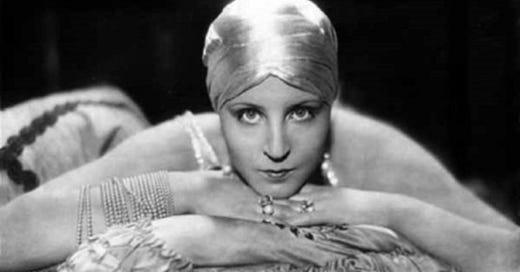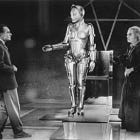Creating a Human from the Mandrake Plant: Alraune
Alraune, a film that stands out among the most eccentric representatives of Science Fiction Underground Cinema, has been adapted for the silver screen five times in different eras.
Alraune, a film that stands out among the most eccentric representatives of Science Fiction Underground Cinema, has been adapted for the silver screen five times in different eras. The initial 1918 version of the film was directed by Hungarian-American filmmaker Mihály Kertész (Michael Curtiz), and the second adaptation occurred in the same year, this time by Hungarian-German cinematographer and director Jeno Illés (Eugen Illés), titled "Alraune, die Henkerstochter, genannt die rote Hanne."
The director of the third film, inspired by the eponymous novel of German poet and philosopher Hanns Heinz Ewers in 1928, is Henrik Galeen, a notable figure in German Expressionist Cinema akin to Fritz Lang. Similar to its two predecessors, the film's foundation is rooted in the legend of the mandrake plant, a botanical entity resembling a human with roots and leaves, originating from medieval times. According to the legend, this plant sprouts from the earth beneath the hanged body of a executed prisoner. Professor Jakob ten Brinken, striving to demonstrate the alleged capability of this plant to impregnate a woman, achieves a momentous breakthrough. During an evening where he invites numerous scientists to share his work, he reveals his fascination with the folklore surrounding this plant and his intention to conduct experiments related to this ancient superstition.
Renowned for his contributions to genetic hybrid breeding, Brinken recounts the narrative of his life experiment to his nephew Franz Braun, as conducting such an experiment on a living human is unprecedented. Instructing Braun to bring a woman from the societal fringes, Brinken becomes captivated by the idea of creating a woman through artificial insemination. In the film featuring Brigitte Helm as both the prostitute and Alraune, Franz Braun cautions his uncle Brinken against proceeding with the experiment, highlighting the repercussions nature will exact. Despite these warnings, Brinken remains undeterred, and the birth unfolds.
Alraune, causing disturbances in the convent school where she was raised and educated, eventually escapes and becomes the forbidden fruit of this birth. Through a man she encounters on a train, she secures employment in a circus. The film depicts two scenes of Alraune seducing and driving many enamored men to madness, leaving an indelible mark on our visual memory. In the first scene, after a backstage dispute, Alraune finds herself in a cage with four adult lions and, with her gaze, repels the animals' attack. In the second scene, she decides at the last moment not to strangle Professor Brinken, the architect of her existence. This moment of withdrawal is portrayed as the shadow of Alraune's hands approaching and receding from Brinken's throat while he sleeps. One of the film's most notable aspects is the exploration of ethics and morality in science, contributing to the sustenance of the genre we would categorize as German literature due to its structure and multiple adaptations in cinema.










